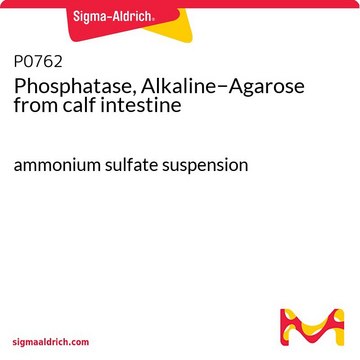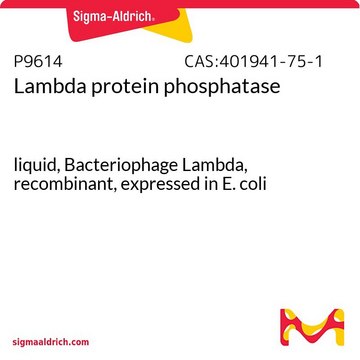P4978
Phosphatase, Alkaline from calf intestine
buffered aqueous glycerol solution
Sinonimo/i:
CIAP, CIP, Orthophosphoric-monoester phosphohydrolase (alkaline optimum)
About This Item
Prodotti consigliati
Grado
Molecular Biology
for molecular biology
Stato
buffered aqueous glycerol solution
PM
~80 kDa
Concentrazione
≥10,000 units/mL
N° accesso UniProt
Attività estranea
DNase, RNase, none detected
Condizioni di spedizione
wet ice
Temperatura di conservazione
−20°C
Informazioni sul gene
cow ... ALPI(280993)
Cerchi prodotti simili? Visita Guida al confronto tra prodotti
Descrizione generale
Applicazioni
Componenti
Definizione di unità
Altre note
Inibitore
Prodotti correlati
Substrato
Codice della classe di stoccaggio
10 - Combustible liquids
Classe di pericolosità dell'acqua (WGK)
WGK 1
Punto d’infiammabilità (°F)
Not applicable
Punto d’infiammabilità (°C)
Not applicable
Scegli una delle versioni più recenti:
Possiedi già questo prodotto?
I documenti relativi ai prodotti acquistati recentemente sono disponibili nell’Archivio dei documenti.
I clienti hanno visto anche
Protocolli
CIP is used to remove 5’-phosphate groups from DNA, RNA and both ribo and deoxy-ribonucleoside triphosphates. Detailed protocol on how to dephosphorylate DNA.
Enzymatic Assay of Alkaline Phosphatase, Diethanolamine Assay (EC 3. 1. 3. 1)
Il team dei nostri ricercatori vanta grande esperienza in tutte le aree della ricerca quali Life Science, scienza dei materiali, sintesi chimica, cromatografia, discipline analitiche, ecc..
Contatta l'Assistenza Tecnica.








